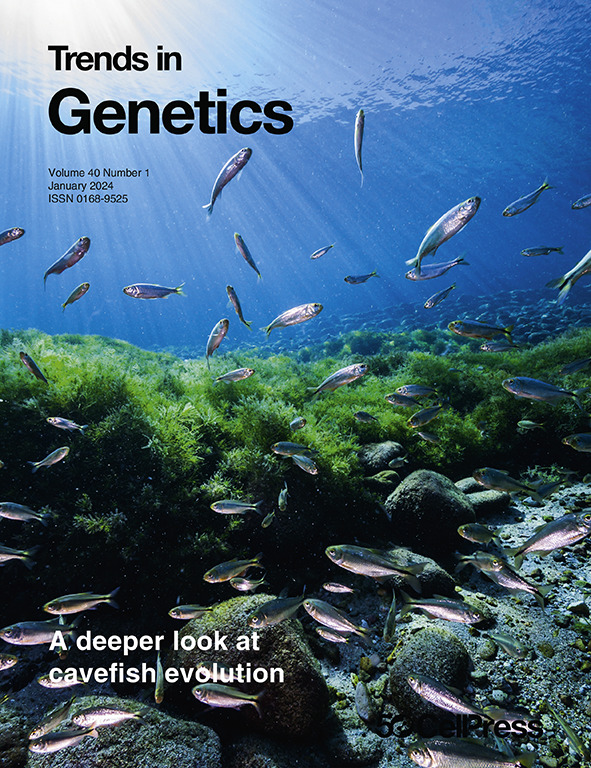Animal origins: looping back in time.
IF 16.3
2区 生物学
Q1 GENETICS & HEREDITY
引用次数: 0
Abstract
How did the chromatin folding mechanisms controlling gene regulation emerge during animal evolution? Kim et al. surveyed chromatin folding at high-resolution in unicellular relatives of animals as well as non-bilaterian animal lineages. They found that chromatin loops appeared concomitantly with complex gene regulation and uncovered an unexpected diversity of chromatin looping mechanisms.
动物起源:回到过去。
在动物进化过程中,控制基因调控的染色质折叠机制是如何出现的?Kim等人以高分辨率调查了动物单细胞亲缘关系以及非双边动物谱系的染色质折叠。他们发现染色质环与复杂的基因调控同时出现,并揭示了染色质环机制的意想不到的多样性。
本文章由计算机程序翻译,如有差异,请以英文原文为准。
求助全文
约1分钟内获得全文
求助全文
来源期刊

Trends in Genetics
生物-遗传学
CiteScore
20.90
自引率
0.90%
发文量
160
审稿时长
6-12 weeks
期刊介绍:
Launched in 1985, Trends in Genetics swiftly established itself as a "must-read" for geneticists, offering concise, accessible articles covering a spectrum of topics from developmental biology to evolution. This reputation endures, making TiG a cherished resource in the genetic research community. While evolving with the field, the journal now embraces new areas like genomics, epigenetics, and computational genetics, alongside its continued coverage of traditional subjects such as transcriptional regulation, population genetics, and chromosome biology.
Despite expanding its scope, the core objective of TiG remains steadfast: to furnish researchers and students with high-quality, innovative reviews, commentaries, and discussions, fostering an appreciation for advances in genetic research. Each issue of TiG presents lively and up-to-date Reviews and Opinions, alongside shorter articles like Science & Society and Spotlight pieces. Invited from leading researchers, Reviews objectively chronicle recent developments, Opinions provide a forum for debate and hypothesis, and shorter articles explore the intersection of genetics with science and policy, as well as emerging ideas in the field. All articles undergo rigorous peer-review.
 求助内容:
求助内容: 应助结果提醒方式:
应助结果提醒方式:


